"Handling relationships with ex-employees can be challenging, particularly when an employee leaves under negative circumstances. At The HR Consultants, we understand that a disgruntled ex-employee can impact your business reputation, workplace productivity, and even lead to legal action if not managed properly.
Understanding how to address these situations is essential for maintaining a positive work environment and protecting your company's reputation.
[addCTA blink=""/services/hr-documentation/"" title=""Got an HR project that needs a touch of expert magic?""]
Understanding Disgruntled Ex-Employees
Before thinking about how to handle a disgruntled ex-employee, it is first important to understand them.
Who Are Disgruntled Ex-Employees?
Disgruntled ex-employees are individuals who leave a company with unresolved grievances or negative feelings. These feelings can stem from various issues, such as perceived unfair dismissal, dissatisfaction with the termination process, or disagreements with management.
When an ex-employee believes they were treated unfairly, their negative emotions can manifest in actions that may harm the business.

Common reasons for an employee to become disgruntled after leaving include being dismissed for poor performance, gross misconduct, or other disputes during their employment.
These ex-employees may express their dissatisfaction through negative reviews, online comments, or even by spreading false information about the company. It’s important for businesses to recognise these potential risks and take steps to manage them effectively.
Actions to Take When Handling a Disgruntled Ex-Employee
We've now listed some proven ways to handle an employee leaving.
1. Develop a Thorough Offboarding Process
A well-structured offboarding process is essential in reducing the risk of disgruntled ex-employees causing issues for your business. By ensuring that every employee leaves on a positive note, you minimise the chances of negative behaviour, such as posting bad reviews or spreading harmful information about the company.
A consistent and professional offboarding process helps maintain your business's reputation and creates goodwill, even after an employee has left.
This process should include clear communication about the reasons for the employee's departure, ensuring they feel respected and valued despite leaving the company. Proper documentation during the offboarding can also protect against potential legal action, particularly if the employee believes they were unfairly dismissed.
By taking these steps, you can create a smoother transition and reduce the likelihood of any lingering resentment that could lead to disruptive actions.
2. Conduct Exit Interviews
Exit interviews are a valuable tool for identifying and addressing any issues that might cause an ex-employee to become disgruntled. By providing a platform for employees to share their concerns before they leave, you can resolve potential grievances that could otherwise lead to negative feedback or legal claims.
This measure helps to protect your business reputation and offers insights into areas where your company can improve.
During these interviews, it's important to listen carefully, ask the right questions and document the feedback provided. This information can be used to make necessary changes within the company, reducing the chances of future employees leaving with unresolved issues.
By addressing concerns before the employee's departure, you decrease the risk of them becoming a disgruntled ex-employee who might take damaging actions against your business.
3. Implement Preventative Legal Measures
To minimise the risk of post-employment issues, it’s essential to implement preventative legal measures as part of your employment contracts. Non-disclosure agreements (NDAs) and non-compete clauses are effective tools for protecting your business’s confidential information after an employee leaves.
These legal protections can prevent a disgruntled ex-employee from contacting current customers, sharing sensitive business practices, or taking a job with a direct competitor.
Including these agreements in your employment contracts can act as a deterrent, discouraging former employees from engaging in behaviour that could harm your business's reputation. Additionally, clearly outlining the consequences of breaching these agreements helps to reinforce the seriousness of these conditions.
Taking these steps can protect your business from internal investigation and potential legal action and maintain a positive work environment even after employees leave.
4. Respect Confidentiality During Termination
Maintaining confidentiality during the termination process is vital in preserving the dignity of the departing employee and reducing the risk of negative fallout. Handling terminations privately helps prevent the ex-employee from feeling embarrassed or unfairly treated, which can often lead to negative feedback or online reviews.

By respecting their privacy, you can help ensure that the employee leaves with a better impression of your business, lowering the chances of them becoming disgruntled.
It’s also important to keep the details of the termination limited to only those who need to know within the company. This strategy prevents unnecessary gossip and protects the company’s reputation by showing that you handle such matters professionally.
A respectful and confidential termination process can make a significant difference in how the ex-employee views their former colleagues and employer, thereby reducing the likelihood of them taking harmful actions after they leave.
5. Maintain Open Communication Post-Employment
Keeping communication lines open with ex-employees can be a valuable strategy for mitigating negative behaviour after they leave your company. By reaching out to former employees, you show that you are still invested in their well-being, which can reduce any lingering resentment they might feel.
This procedure can prevent an angry ex-employee from becoming disgruntled and potentially taking actions that could harm your business reputation.
Regular check-ins or offering support, such as assistance in finding new employment opportunities, can help maintain a positive relationship. This gesture can leave the ex-employee with a better impression of their former employer, making them less likely to post negative comments or reviews online.
Open communication post-employment is not just about preventing negative outcomes but also about maintaining a professional network that could benefit both parties in the future.
6. Monitor and Manage Online Reputation
Effectively monitoring and managing your online reputation is essential, especially when dealing with negative reviews from ex-employees. Regularly checking online platforms for feedback allows you to quickly identify and address any negative comments that could damage your business’s reputation.

A prompt and professional response can often defuse the situation and show other readers that your company is committed to resolving issues fairly.
When responding to negative reviews, it’s important to remain calm and constructive. Acknowledge the ex-employee’s concerns without escalating the situation, and where possible, offer to discuss their issues privately.
This tactic helps to resolve the immediate issue but also demonstrates to potential employees and customers that your business handles conflicts responsibly. Managing your online reputation carefully can prevent small issues from growing into significant problems.
7. Document Everything Carefully
Maintaining detailed records is essential for protecting your business, especially when dealing with employee performance, grievances, and the termination process. Thorough documentation serves as vital evidence should any disputes arise after an employee leaves.
By keeping accurate records of all interactions, including performance reviews and any disciplinary actions, you can provide a clear account of the events leading up to an employee’s departure.
These records are not just useful for internal purposes; they can also be handy if you need to defend your business in an employment tribunal or legal claim. Detailed documentation like your employee handbook helps to demonstrate that your decisions were fair and justified, reducing the likelihood of a disgruntled ex-employee successfully challenging your actions.
This level of preparation can protect your business from unnecessary legal complications and uphold its reputation.
8. Be Prepared for Legal Action
It’s important to be prepared for the possibility that an ex-employee may resort to defamation or legal action against your business. If an ex-employee makes false claims or engages in defamatory behaviour, you must address these issues promptly to protect your company’s reputation.
Familiarise yourself with the legal framework surrounding defamation, including the Defamation Act, to understand your rights and the steps you can take.
In addition to understanding defamation laws, it’s important to have a strategy in place for handling potential legal claims. This might include seeking legal advice, gathering all relevant documentation, and preparing a clear response to any allegations.
Being prepared for these scenarios helps you manage them more effectively but also sends a strong message that your business is equipped to defend its reputation against unwarranted attacks.
9. Offer Post-Employment Support
Providing post-employment support to ex-employees can help maintain a positive relationship and reduce the likelihood of negative behaviour. Offering assistance such as outplacement services, career counselling, or references can leave a lasting positive impression.
When ex-employees feel supported during their transition, they are less likely to harbour resentment or engage in actions that could harm your business’s reputation.
This kind of support demonstrates that your business values its employees, even after they have left. It can also help mitigate the spread of negative comments or reviews, as ex-employees are more likely to speak positively about a company that treated them well during and after their employment.
By offering post-employment support, you can build goodwill and potentially turn a challenging situation into a more positive outcome for both parties.
10. Handle Terminations with Care
Handling terminations with care is essential to prevent escalating negative emotions that could lead to disruptive behaviour from ex-employees. When managing difficult terminations, it’s important to approach the situation with sensitivity and respect.
Clearly communicate the reasons for the decision, and ensure that the process is conducted professionally and privately to preserve the dignity of the departing employee.
Taking a thoughtful stance during the termination process can significantly reduce the risk of negative repercussions. This includes offering the employee the opportunity to resign rather than being dismissed, providing a severance package, or simply ensuring that the conversation remains respectful.
By handling terminations with care, you minimise the likelihood of creating a disgruntled ex-employee who might take actions that could damage your business. Having compassion for their situation can also avoid any negative online reviews. This goes a long way in keeping your reptuation in check.
Get Support
If you're dealing with a disgruntled ex-employee or facing similar challenges related to former staff members, we’re here to help.
Contact us today for a friendly, no-obligation chat, and let us provide the expert guidance you need to protect your business and manage these sensitive situations with confidence.
Frequently Asked Questions
Understanding how to handle a disgruntled ex-employee can be complex, but it's vital for protecting your business. Below are some common questions and answers on the topic.
What are the signs that an ex-employee might cause problems for my business?
Signs include negative comments on social media or review sites, persistent communication with current employees, or any indication they might disclose confidential information. It's important to monitor these channels and address any concerns promptly.
How can I prevent a disgruntled ex-employee from damaging my company’s reputation?
Implementing a thorough offboarding process and maintaining open communication post-employment are key steps. This ensures that the ex-employee leaves on a positive note, reducing the likelihood of negative actions that could harm your reputation.
What legal measures can I take if an ex-employee spreads false information about my business?
If an ex-employee engages in defamation, it's crucial to understand your legal rights. Consult with a legal professional to assess the situation and take appropriate action, such as issuing a cease and desist letter or pursuing legal claims if necessary. We can provide guidance to protect your business in these situations."














